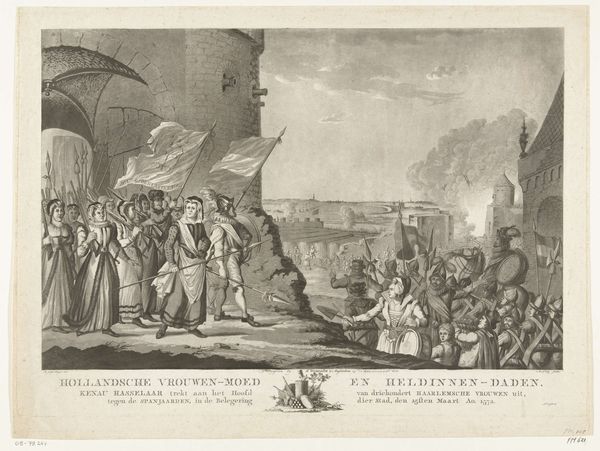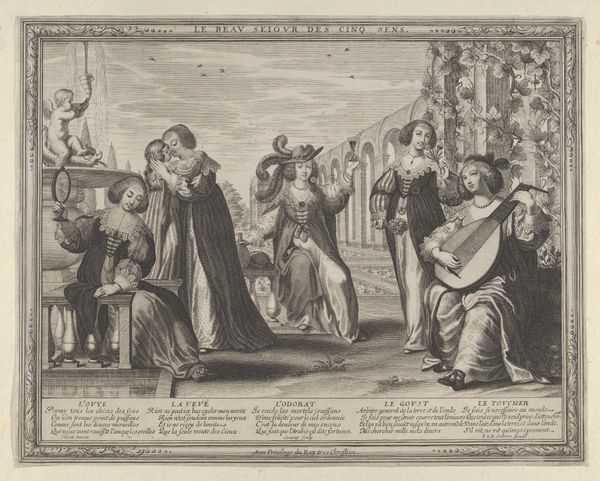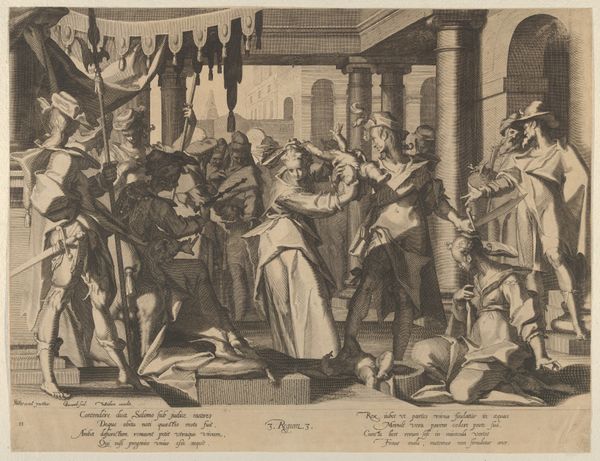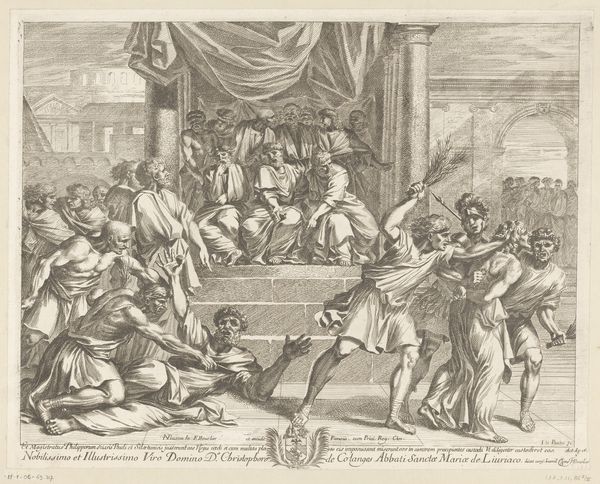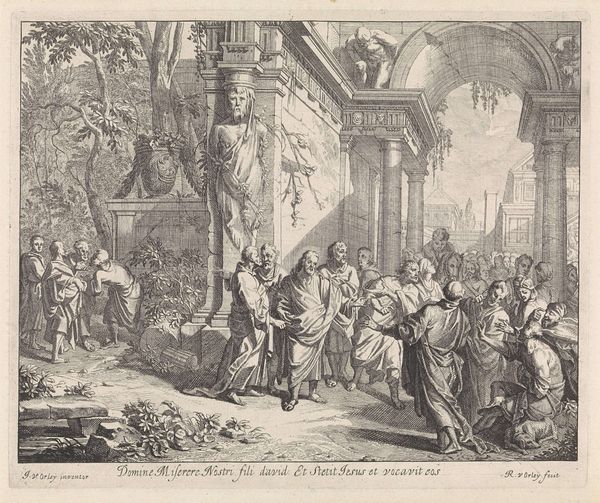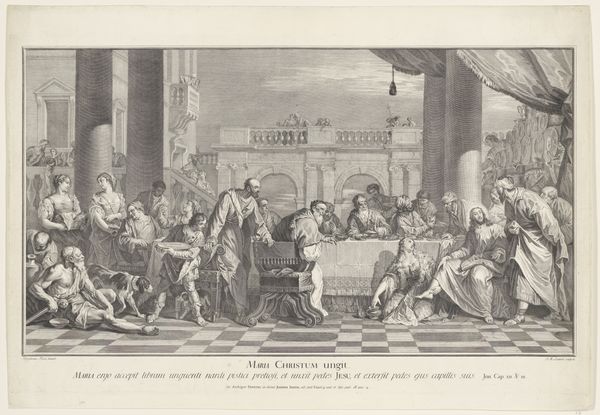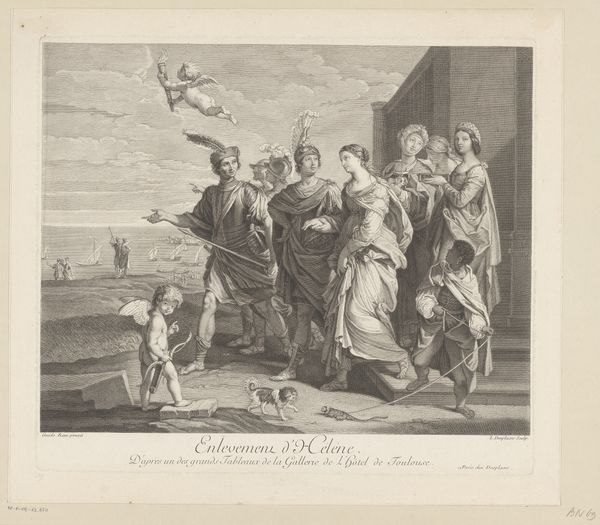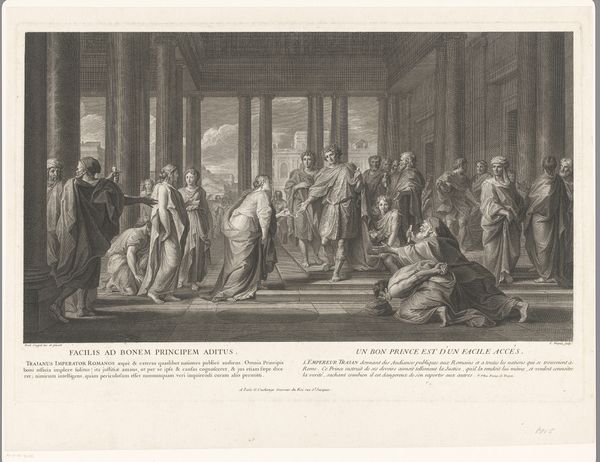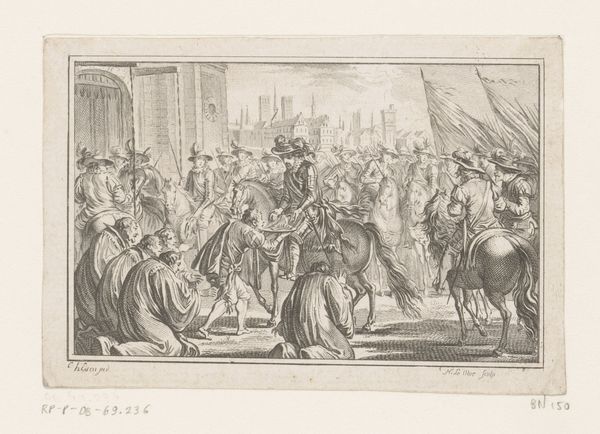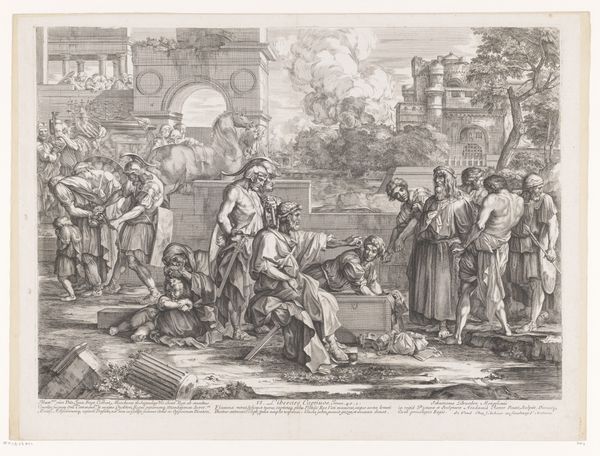
engraving
#
pencil drawn
#
baroque
#
pencil sketch
#
old engraving style
#
pencil work
#
genre-painting
#
history-painting
#
engraving
Dimensions: height 291 mm, width 384 mm
Copyright: Rijks Museum: Open Domain
Editor: This engraving by Jean Moyreau, made in 1726, is called 'Hector Takes Leave of Andromache.' The starkness of the black and white and the detail in the figures create a really intense scene of farewell. What's your interpretation of it? Curator: Well, let’s consider the means of production here. Engraving was a readily reproducible medium in the 18th century. Think about its use; this allowed for the widespread dissemination of images, especially of historical or genre scenes, to a bourgeois audience eager to consume stories of heroism and tragedy. How do you think the choice of this medium affects our understanding of the artwork? Editor: It’s interesting that it was designed for reproduction... almost like a really high-end, elaborate newspaper comic. So the accessibility and lower production cost makes this art a product available to a wider audience beyond, say, just wealthy art patrons? Curator: Exactly! Consider the socio-economic context. The engraving process itself – the labour involved, the accessibility of materials – democratizes the imagery, turning even grand narratives into commodities. Is Moyreau critiquing or celebrating this accessibility, do you think? Editor: That's a tough question. The skill involved suggests celebrating craftsmanship. The scene depicts elites and it appears this kind of ‘genre’ of image consumption caters to aspirational values of middle-class audiences of the time. Curator: Precisely! It speaks volumes about the consumerism around these classical narratives in the 18th century and, for me, forces a reassessment of the social role of "high" art at that time. Editor: I never really thought about engravings in terms of the materials and means of production impacting their cultural significance. Curator: That’s exactly the point! Focusing on materiality changes how we value and interpret art.
Comments
No comments
Be the first to comment and join the conversation on the ultimate creative platform.

